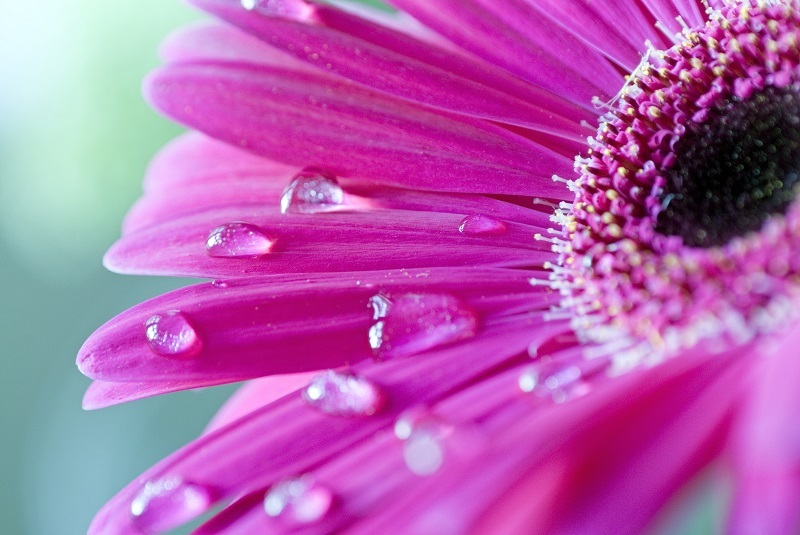Innovative Ways to Keep Your Poinsettias Flourishing
Posted on 27/08/2025
Innovative Ways to Keep Your Poinsettias Flourishing
Poinsettias (Euphorbia pulcherrima) have become the quintessential holiday bloom, but why should their beauty fade after the festivities? Most people discard poinsettias after December, but with the right approach and a touch of creativity, you can keep your poinsettias flourishing all year. In this comprehensive guide, we'll share some innovative strategies that go beyond basic care -- ensuring your poinsettias thrive well into the next season. Ready to unlock the secrets of vibrant, healthy blooms? Keep reading!
Why Poinsettia Health Matters All Year
Maintaining healthy poinsettias beyond the holiday season offers numerous rewards. Long-lasting, flourishing poinsettias enhance your indoor decor, air quality, and boost your gardening confidence. Moreover, learning to keep poinsettias healthy all year helps reduce waste and saves money. Let's dive into proven as well as unexpected methods for optimal poinsettia growth.

Essential Care Foundation for Thriving Poinsettias
Before exploring innovative methods, understanding the fundamental needs of poinsettias is essential. These elements build the foundation for year-round poinsettia health:
- Light: Bright, indirect sunlight is crucial for vibrant leaves and bracts.
- Water: Consistent, but careful watering ensures root health and avoids disease.
- Temperature: Like Goldilocks, poinsettias prefer it not too hot or too cold -- 65-75?F (18-24?C) is ideal.
- Humidity: High humidity supports lush growth, especially in heated winter homes.
- Fertilizing: Proper feeding rejuvenates tired plants after the holidays.
Once you master these basics, you'll be prepared for the innovative ways to keep your poinsettia plants flourishing that we'll cover next.
Creative and Effective Poinsettia Watering Techniques
Watering is more art than science when it comes to flourishing poinsettias. Overwatering is the most common killer, while underwatering can cause drooping and leaf drop. Here's how to take your watering regime to the next level and keep poinsettias perky:
1. Bottom-Watering for Stronger Roots
Instead of pouring water over the soil, try bottom-watering. Place your poinsettia pot in a shallow tray of water for 15-20 minutes, letting the roots absorb what they need. This method prevents root rot and encourages root depth, helping your poinsettias flourish.
2. Smart Moisture Meters
Consider investing in a soil moisture meter. These handy gadgets take out the guesswork -- simply insert them into the soil and check if it's time to water. Proper hydration is one of the key innovative strategies for keeping poinsettias healthy and strong.
3. Mulching to Lock in Moisture
Add a layer of decorative mulch or sphagnum moss to the surface of your poinsettia's soil. Mulching retains moisture and also gives your potted plant a fresh look -- a simple but effective way to help your poinsettia flourish!
Harnessing the Power of Light: Advanced Poinsettia Placement
Light can make all the difference in poinsettia longevity. Try these cutting-edge pointers:
4. Rotating for Even Growth
Rotate your plant a quarter turn every time you water. This ensures all sides receive equal sunlight, preventing legginess and encouraging full, bushy growth -- a hallmark of flourishing poinsettias.
5. Supplemental LED Grow Lights
Don't rely on windows alone! Set up LED grow lights to give your poinsettias the spectrum they crave, especially through winter and in low-light rooms. Modern grow lights are energy-efficient and customizable, making them one of the most innovative solutions for vibrant, long-lasting poinsettia displays.
Temperature and Draft Management for Poinsettia Health
Temperature swings and drafts can stress poinsettias, leading to leaf loss or faded color. Here's how to create the perfect microclimate:
- Keep poinsettias away from heat sources: Avoid placing them near radiators, fireplaces, or heaters.
- Shield from drafts: Don't position your plant in front of doors or leaky windows.
- Use insulating stands: Elevate pots slightly from cold windowsills to maintain appropriate root temperature.
Investing in a simple digital thermometer can help guarantee your plant's environment stays stable, a crucial innovative tip for year-round poinsettia success.
Humidity Tips: Bringing the Tropics to Your Home
Poinsettias thrive in humid environments, which can be challenging in dry, heated spaces. Amp up the humidity with these innovative solutions:
- Humidity trays: Place your pots on trays filled with pebbles and water to naturally increase moisture around the plant.
- Creative grouping: Cluster poinsettias with other houseplants to create a mini indoor greenhouse effect.
- Misting: Regularly mist foliage with filtered water, particularly during the winter months.
- Room humidifiers: Run a small humidifier near your poinsettia display to boost airborne moisture.
Soil Innovations: Go Beyond Standard Potting Mix
Soil quality is a hidden factor in maximizing your poinsettia's vigor and vibrancy. For truly flourishing plants, consider:
- Well-draining blends: Mix in perlite and coconut coir to prevent soggy roots.
- Activated charcoal: Add a sprinkle to the soil for root health and odor control.
- Refresh each spring: Remove the top third of old soil and replace with a fresh, enriched mix.
Fertilizing Poinsettias: Feeding for Ongoing Brilliance
Many people forget that fertilizing is essential for flourishing poinsettias, especially after blooms fade. Here's how to make feeding your secret weapon:
- Use a balanced, all-purpose fertilizer: Apply every 2-4 weeks from spring through fall.
- Cut back in winter: Ease off feeding when the plant isn't actively growing.
- Trace minerals: Look for micronutrients like magnesium and iron for unbeatable color and vitality.
Try incorporating liquid seaweed or fish emulsion for an organic burst of nutrients; these are crowd favorites among innovative poinsettia caretakers!
Encouraging Re-blooming: The Blackout Trick & Other Smart Strategies
Looking to enjoy those iconic red bracts again next holiday season? Use these little-known but powerful re-blooming techniques:
6. The Blackout Method
Starting in late September, give your poinsettia 14-16 hours of complete darkness each night for 8-10 weeks. Cover the plant with an opaque box or move it into a closet. This induces flowering and color change before December.
7. Scheduled Lighting and Feeding
Stick to a strict schedule of lighting, watering, and fertilizing during the re-blooming period. Consistency is key, and rewards you with a lush, colorful poinsettia ready to steal the show.
8. Pruning for Bushier Plants
Once the bracts have faded, prune your poinsettia back to about 6 inches. New, strong stems will emerge, growing into a fuller, more robust plant for the next cycle.
Repotting Hacks: Give Room to Flourish
Spring is the ideal time to repot your poinsettia. Use a pot one size larger, refresh the soil, and inspect roots for health. Unique planter designs -- such as self-watering pots or double-walled planters -- help maintain consistent moisture and temperature. This can be a gamechanger for year-round poinsettia health.
Creative Poinsettia Displays: Beyond Basic Pots
Why settle for ordinary? Creative containers and display ideas can boost air circulation and aesthetic appeal, helping plants flourish:
- Wall-hung planters for a vertical garden effect
- Decorative baskets with internal liners for added flair
- Planting multiple poinsettias of differing colors together for a dramatic arrangement
Organic Pest & Disease Management
Healthy, flourishing poinsettias are less prone to pests and disease, but prevention is better than cure. Try these innovative, eco-friendly tactics:
- Use neem oil or insecticidal soap for aphids and whiteflies
- Sprinkle cinnamon powder on soil surface to prevent fungus and gnats
- Improve air flow with fans or by spacing plants apart
- Wipe leaves gently with a damp cloth to keep them dust-free and pest-resistant
Natural Companion Plants
Pair poinsettias with companion plants like marigolds or basil, which naturally deter common pests and enhance the microclimate.
Common Mistakes to Avoid When Caring for Poinsettias
- Overwatering or letting the plant stand in water
- Exposing the plant to sudden temperature changes
- Forgetting to fertilize or use water that's too cold
- Letting the plant sit in hot midday sun, causing leaf scorch
Poinsettia Myths Debunked
- Myth: Poinsettias are highly poisonous. Fact: They are only mildly toxic, causing discomfort if consumed, but are safe to keep in homes with pets and children (though supervision is always advised).
- Myth: Only red poinsettias thrive. Fact: Poinsettias come in many colors -- care regimes are nearly identical, so get creative!

FAQs: Innovative Poinsettia Care Questions Answered
How long can I keep a poinsettia alive?
With the right care and innovative approaches, it's common to keep poinsettias flourishing for several years -- some enthusiasts have thriving plants over a decade old!
Should I keep my poinsettia outside?
During warm weather (above 60?F/15?C at night), you can move poinsettias outdoors to a semi-shaded spot. Be sure to acclimate them gradually and watch for sudden weather changes.
What if my poinsettia shrivels after Christmas?
Poinsettias often drop leaves naturally as they adjust to post-holiday conditions. Support them with proper watering, fertilizing, and light -- most will bounce back with new foliage by spring!
Conclusion: Your Poinsettia, Reimagined
With a few innovative techniques and diligent care, poinsettias can be much more than a fleeting holiday tradition. Master watering, light, feeding, and creative displays -- and you'll enjoy gorgeous, flourishing poinsettias all year long. Why not try a new approach this season and watch your poinsettias surprise you with their lasting beauty and vitality?
Your journey to keeping poinsettias flourishing starts now! Explore, experiment, and let your creativity blossom alongside your plants.
Latest Posts
Understanding the Symbolism and Colors of Peony Flowers
Innovative Ways to Keep Your Poinsettias Flourishing
Lovers' Language: Red Roses on Valentine's Day
The Passionate Gardener's Orchid Care Handbook
Find Out Which 12 Long-Lasting Flowers Will Brighten Your Day





